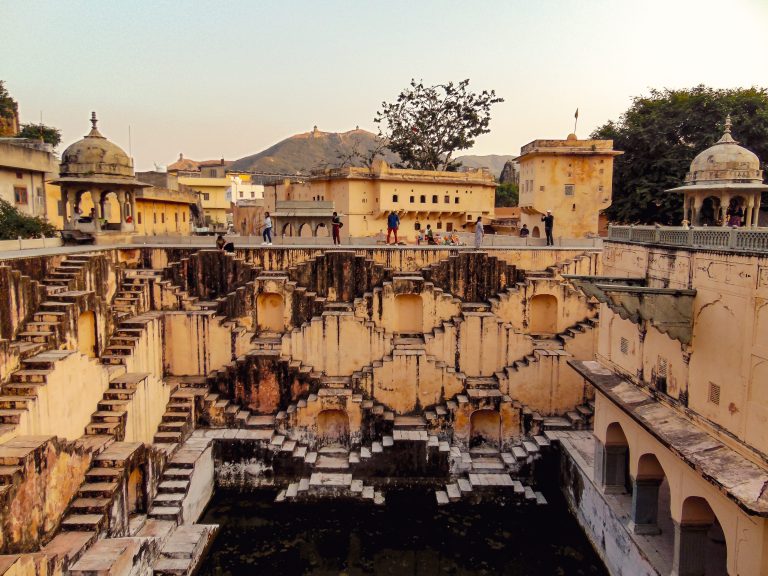Mumbai, the city that is now the most populous city and the financial centre of India, was once just seven small islands called Bombay. The city that was once given as dowry to Britishers and developed by them has now turned into something so wretched that only 25% of its inhabitants can afford it. As Kamu Iyer said, “You can judge a city by how it’s poor live.” So, how is this city turned into something with such dehumanising conditions? How has the housing industry in Mumbai changed so much that the earlier problem of overcrowding in affordable rooms has shifted to living on pavements because ‘home’ is no longer affordable? Here is a look into the evolution of housing from Bombay to Mumbai and its impacts.
The Plague & The BIT
During the 1800s, Bombay was restricted to the Fort Area & the Docks. They provided work for the migrants from rural areas. These migrants started living in unplanned settlements 3 km north of the fort. The settlements were close enough for the migrants to travel for work but also distant enough from the British population of the fort. The Britishers initially called this region ‘The Black Town’, later renamed ‘Native Town.’

© Atlas Obscura
The native town was an unplanned development with haphazard growth. Most houses didn’t have proper light and ventilation, drainage outlets and enough open spaces. What changed the urban planning of this region was the plague of 1896. The outbreak of the plague was in the native town, and it was a threat to the British population of the fort area. The situation became so severe that many people started living in tents on maidans to avoid getting infected.
This scenario led to the development of the Bombay Improvement Trust (BIT). The trust was established to clean up the city and develop planned neighbourhoods. The initial work done by the trust to develop Bombay was the realignment of roads to create gullies for improvement in light and ventilation and ensuring open spaces between buildings. The BIT also drafted rules that discussed how much building footprint was allowed on a particular site. It also introduced the 63.5-degree light angle rule ( a rule that derived how much open space should be around a building to have enough light and ventilation on the lowest floor). According to this rule, the angle of 63.5 degrees from the height of the building for open spaces ensured accurate light and ventilation.

© Author
Initial Colonies & Neighbourhoods
The initial colonies had multiple shaded roads, plenty of open spaces, and generally three-storey buildings. The colonies would typically have two main roads running in a north-south direction, crossroads that connected these roads and houses that opened into these crossroads. Most roads were pedestrian roads with trees on either side (which made sense because car ownership was rare then). The buildings were set back from the road, adding to the sense of openness since most houses were small.

© Author
The houses were built so that they had a verandah or a balcony looking into the street. One could see what was happening on the street, forming a connection between the street and the house. This connection had a social and psychological impact. Housewives used the space to buy things and bargain with the hawkers. It was a space where one could chit-chat with each other and a space where male members of the family would generally sit and read newspapers or take afternoon naps. The area was an interactive living space for the entire neighbourhood.

© Anushka Gupta
The Development Of Chawls & Its Impact On Light & Ventilation
The increase in population led to the development of chawls for the workers. The initial chawls had two doors opening into the staircase lobby. One of the doors led to the front of individual rooms, while the other led to a corridor that connected the WC, the washing & bathing areas. The chawls never had habitable spaces with an attached toilet. It was common to have toilets for everyone attached at the end of the corridor for the ease of plumbing & drainage systems.

© Author
Most chawls were built using load-bearing walls, with balconies being the most essential feature. The balconies were generally constructed in wood & were supported by brackets. Carved railings and brackets for the balconies were a common thing. Because of the layout of the chawls, most windows were narrow. As a result, the habitable spaces didn’t have enough light. The light entering the habitable spaces was further reduced by the trees outside. As a result, the balconies & corridors of the chawls became an important space. People were seen sitting & sleeping in corridors for hours. These corridors became an important social space for the inhabitants.

The Idea Of BHK
Post-1947, there was a significant increase in the population of Bombay due to the migration of refugees from Pakistan. This led to a housing shortage in the city. The first developers who started selling property in the city sold it as flats with a percentage of land share. These flats were generally sold out as a 2 BHK. This was a marketing strategy used by the developers to show more rooms. But, the area of the apartment remained the same; it’s just the rooms that increased. This led to the kitchen’s shrinkage and the dining area’s shift from the kitchen to the living room. Due to this shrinkage in space, the idea of bay windows came in. The bay window occupied less space than the balcony and added to the area of the living room. Thus, the balcony was replaced, and the connection with the street was lost.

© Author
Development Of Stand Alone Buildings
Over the years, the BIT started taking over lands to develop estates. These estates included individual bungalows or large apartment buildings. The estates also determined the social & economic profile of people & this was when housing became a symbol of economic status rather than a home. The BIT placed multiple restrictions on the development of these houses. The architectural features were restricted to ⅓ of the length of the facade. The compound wall is the first thing to be seen when standing on the street. The compound wall maintained the street line and had a height of 1.5 metres. The design of the compound wall was to be approved by BIT. This later led to the development of gated communities & the connection with the street was lost entirely.
RCC Apartments
Mumbai was the first Indian city to see the emergence of apartments; this indicates the city’s early embrace of modernity and its struggle for space. The apartment block was an independent dwelling with its bathroom grouped in one building. The apartments were an agent of social change. With the introduction of RCC, the architecture & design of the apartments changed. The improved plumbing & sanitation greatly impacted the interior design of the flats. The toilet no longer needed to be placed at one end of the flat. The flats became larger, and the layouts changed. The floor design was stacked one over the other to create a multistorey building that could house multiple families.

Developer Driven Buildings
The housing typology changed over the years based on the family structure, living patterns, family income and evolution of planning rules. By the 1960s, significant promoters of apartment buildings were profit-driven developers. The FSI now became a measure of commercial opportunity. There was a substantial increase in the saleable areas and a reduction in common areas like corridors and lobbies. The prices of flats increased, and the dimensions of the rooms and heights decreased. Construction delays and approvals further added to this cost leading to a steep rise in the price of a house.

© No Broker
Over the years, the commercialisation of a house in Mumbai has led to a distortion between land and construction costs, making it difficult to own a house in the city. The spaces of human interaction in the home are lost, and what is left behind is just steel and concrete used in the name of development.




